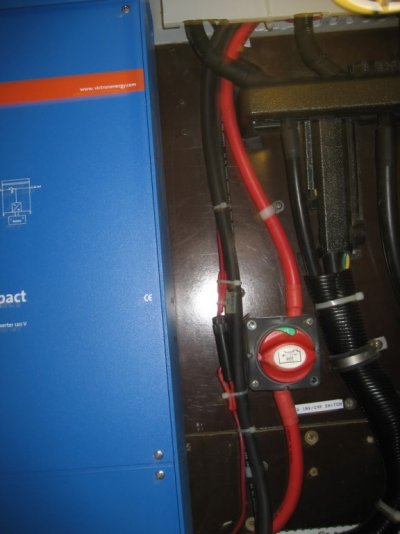sbu22
Guru
- Joined
- Mar 16, 2011
- Messages
- 1,253
- Location
- US
- Vessel Name
- Panache
- Vessel Make
- Viking 43 Double Cabin '76
In the event of an electrical fire while underway, it would seem prudent to deenergize all 12 volt systems (in my case) until the problem can be isolated and cured - both as a damage control measure as well as attempting to contain damage to the electrical system.* However, the way my Viking (I know, not a trawler - but there are a lot of sharp people on this board that I haven't found anywhere else) is set up, this entails dropping into the engine room, squeezing my chubby body between two red hot engines, and getting to the rear (most distant) bulkhead where the battery switches are mounted.* Oh yeah, did I mention the fire?
The cure would seem to be to relocate the switches topside with the attendant monster gage cable runs or to go with "remote" battery switches.* I've only found one remote battery switch setup by Blue Seas ($$$).* Anyone have any experience doing the relocation?* I've not seen it - maybe I'm conjouring a low probability problem that doesn't* concern the experienced hands.* Any thoughts appreciated.
The cure would seem to be to relocate the switches topside with the attendant monster gage cable runs or to go with "remote" battery switches.* I've only found one remote battery switch setup by Blue Seas ($$$).* Anyone have any experience doing the relocation?* I've not seen it - maybe I'm conjouring a low probability problem that doesn't* concern the experienced hands.* Any thoughts appreciated.




